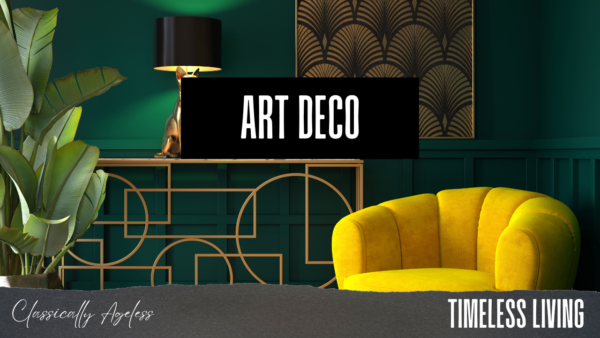The Art Deco movement, which flourished in the 1920s and 1930s, was not just an architectural revolution but also a significant force in interior design. Renowned for its bold geometric patterns, rich colors, and luxurious materials, Art Deco interior design encapsulates the era’s enthusiasm for modernity and opulence. This distinctive style has left a lasting impression on the design world, with many of its elements still celebrated and incorporated into contemporary spaces. This article highlights the enduring appeal of iconic Art Deco interior design, exploring its key features and how they continue to influence modern interiors.
Rich and Diverse Materials: Art Deco interiors are characterized by the use of diverse and often luxurious materials. Exotic woods like ebony, mahogany, and rosewood provided a rich backdrop for furniture and paneling, while chrome, glass, and mirrored surfaces added a modern, reflective quality to the spaces. Lacquer, inlaid wood, and shagreen (stingray skin) were also popular for adding texture and depth. The use of these materials created a sense of sophistication and opulence, hallmark traits of the Art Deco era.
Geometric Patterns and Bold Lines: Geometric patterns are a cornerstone of Art Deco interior design, with motifs such as zigzags, chevrons, and sunbursts adorning wallpapers, textiles, and floor designs. Bold, streamlined forms were prevalent in furniture, giving pieces a sleek, modern look that contrasted with the more ornate styles of previous decades. This emphasis on symmetry and repetition added a dynamic visual rhythm to Art Deco interiors, making them instantly recognizable.
Luxurious Fabrics and Dramatic Color Schemes: Velvet, silk, and satin were favored for their texture and sheen, contributing to the overall feeling of luxury. Art Deco’s color palette often included bold and dramatic colors, such as deep reds, greens, blues, and blacks, accented with metallic tones of gold and silver. These choices reflected the style’s penchant for contrast and drama, further enhancing the luxurious atmosphere of Art Deco spaces.
Lighting as a Focal Point: Art Deco lighting fixtures were designed to be statement pieces, with chandeliers, sconces, and lamps featuring geometric shapes and made from glass, chrome, and brass. Lighting was not just functional but also an integral part of the decorative scheme, contributing to the ambiance and aesthetic of the space. The use of frosted or stained glass added a soft, diffused light that complemented the interior’s glamorous feel.
Iconic Art Deco Spaces: Some of the most iconic examples of Art Deco interior design can be found in historic buildings such as the Chrysler Building’s lobby in New York City, the Palais de Chaillot in Paris, and the Eltham Palace in London. These spaces showcase the style’s signature features, from geometric patterns and luxurious materials to bespoke furniture and dramatic lighting.
Iconic Art Deco interior design continues to influence contemporary design, with its timeless appeal and distinctive aesthetic. Its celebration of modernity, luxury, and craftsmanship resonates with today’s designers and homeowners, who incorporate Art Deco elements into modern interiors for a touch of elegance and history. As we look back on this influential movement, it’s clear that the legacy of Art Deco interior design is as vibrant and relevant as ever, bridging the past and present with its unique style.

